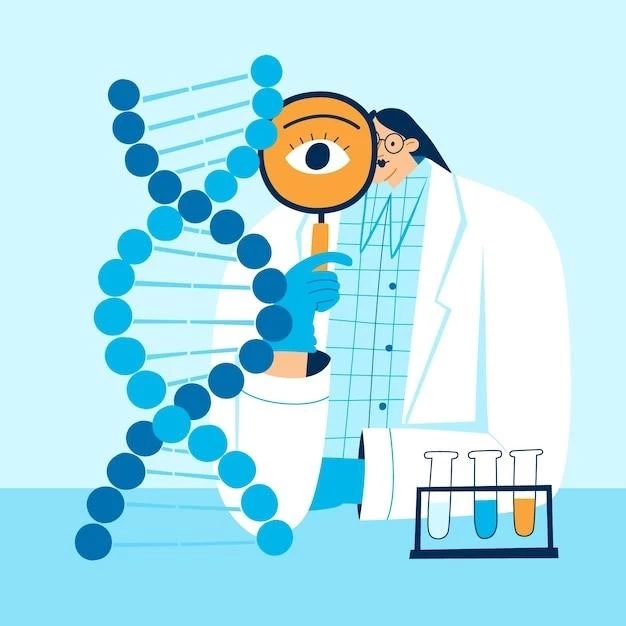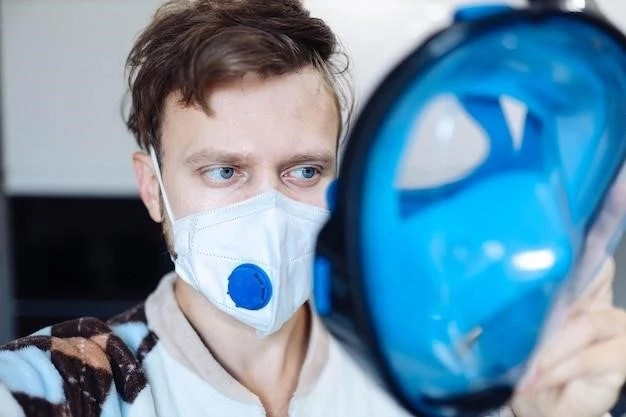Article Plan⁚ Disease — Popliteal Pterygium Syndrome
Overview of Popliteal Pterygium Syndrome
Popliteal pterygium syndrome (PPS) is a rare genetic disorder that affects the face, skin, and genitals. It is characterized by features such as webbing behind the knees, cleft lip, cleft palate, and abnormalities in the limbs and genitalia. This syndrome, also known as facio-genito-popliteal syndrome, presents a complex array of anomalies that impact various parts of the body.
Individuals with PPS may exhibit bilateral popliteal webbing, digital anomalies like syndactyly and hypoplasia of digits, as well as genitourinary issues such as cryptorchidism and genital hypoplasia. The syndrome is inherited in an autosomal dominant manner, and it is crucial for healthcare providers to recognize the diverse clinical features associated with PPS for accurate diagnosis and management.
Understanding the distinct characteristics of Popliteal Pterygium Syndrome is essential for healthcare professionals involved in the care and treatment of affected individuals. Stay informed about the latest research and advancements in managing this rare genetic condition to provide the best possible support and care for patients with PPS.
Causes and Genetics
Popliteal pterygium syndrome (PPS) is a rare genetic disorder with an autosomal dominant inheritance pattern. The condition affects the development of various body parts, including the face, skin, limbs, and genitals. Mutations in the IRF6 gene have been identified as a significant genetic cause of PPS.
Individuals with PPS may present with features such as cleft lip, cleft palate, popliteal pterygium, and digital anomalies. The association between these genetic mutations and the diverse clinical manifestations of PPS underscores the importance of genetic testing and counseling for affected individuals and their families.
Understanding the genetic basis of Popliteal Pterygium Syndrome is crucial for accurate diagnosis, personalized treatment plans, and family planning decisions. Stay informed about the latest research on the genetic mechanisms underlying PPS to enhance patient care and support.
Clinical Features and Diagnostic Criteria

Popliteal pterygium syndrome (PPS) is a rare genetic disorder that involves a constellation of clinical features affecting the face, skin, limbs, and genitals. Individuals with PPS commonly present with distinct characteristics such as cleft lip, cleft palate, popliteal pterygium (a web behind the knee), digital anomalies like syndactyly and hypoplasia of digits, and genitourinary abnormalities. The syndrome’s diagnostic criteria may include a combination of cleft lip/palate, popliteal pterygium, paramedian lower lip sinuses, and genital and toenail anomalies.

Recognizing the diverse clinical features associated with Popliteal Pterygium Syndrome is crucial for accurate diagnosis and appropriate management. Healthcare providers should be aware of the key symptoms and physical manifestations that characterize PPS to provide comprehensive care and support for individuals affected by this rare genetic condition.
Stay informed about the latest advancements in diagnostic tools and criteria for Popliteal Pterygium Syndrome to ensure early identification and intervention, leading to improved outcomes and quality of life for patients with this complex disorder.
Epidemiology and Incidence
Popliteal pterygium syndrome (PPS) is a rare autosomal dominant congenital anomaly, characterized by a complex combination of orofacial, cutaneous, musculoskeletal, and genital anomalies. With an estimated incidence of approximately 1 in 300,000 live births, PPS presents as a challenging condition for healthcare providers due to its rarity and diverse clinical manifestations.
Understanding the epidemiology of Popliteal Pterygium Syndrome is essential for early recognition and appropriate management of affected individuals. Stay informed about the latest research on the prevalence, genetic factors, and environmental influences associated with PPS to enhance diagnostic accuracy and improve patient outcomes.
Healthcare professionals should be vigilant in recognizing the unique features of PPS to provide comprehensive care and support for patients and families affected by this rare genetic disorder. Stay updated on emerging trends in epidemiological studies related to Popliteal Pterygium Syndrome to enhance clinical practice and patient care.
Associated Syndromes and Conditions
Popliteal pterygium syndrome, also known as facio-genito-popliteal syndrome, presents a range of associated syndromes and conditions. One such condition is Bartsocas-Papas syndrome, a rare genetic disorder characterized by severe popliteal webbing, microcephaly, distinctive facial features, oligosyndactyly, and genital anomalies. Understanding the relationship between these syndromes is essential for accurate diagnosis and management.
Multiple pterygium syndrome is another group of rare genetic disorders that share similarities with popliteal pterygium syndrome. These conditions are characterized by joint contractures, skeletal abnormalities, and webbing of various body parts, including the popliteal region. Recognizing the overlapping features between these syndromes is crucial for comprehensive care and genetic counseling.
By staying informed about the associated syndromes and conditions linked to popliteal pterygium syndrome, healthcare providers can enhance their ability to identify and address the complex healthcare needs of individuals affected by these rare genetic disorders. Collaboration with geneticists and specialists in related fields is essential for providing holistic care for patients with these complex conditions.
Management and Treatment Options
Managing Popliteal Pterygium Syndrome (PPS) involves a multidisciplinary approach to address the complex array of anomalies that affect individuals with this rare genetic disorder. Treatment options for PPS may vary depending on the specific clinical features present in each case. Surgical interventions are often required to address issues like cleft lip/palate, popliteal pterygium, and digital anomalies.
Orthopedic surgeons play a crucial role in managing PPS, particularly in addressing the fixed flexion deformity of the knee resulting from popliteal webbing. Surgical correction of the popliteal pterygium contracture is essential to improve limb function and mobility in affected individuals. Physical therapy and rehabilitation programs may complement surgical interventions to optimize outcomes.
Genetic counseling is important for families affected by PPS to understand the inheritance pattern of the syndrome and make informed decisions. Psychological support and resources for individuals and families navigating the challenges of living with a rare genetic condition like PPS are also integral components of comprehensive care.
By staying abreast of advancements in surgical techniques, rehabilitation strategies, and genetic research related to Popliteal Pterygium Syndrome, healthcare professionals can tailor treatment plans to meet the unique needs of each patient. Collaboration among specialists is key to providing holistic care and improving the quality of life for individuals with PPS.
Importance for Orthopedic Surgeons
For orthopedic surgeons, understanding the complexities of Popliteal Pterygium Syndrome (PPS) is crucial due to the unique musculoskeletal challenges it presents. The fixed flexion deformity of the knee resulting from popliteal webbing requires specialized surgical interventions to improve limb function and mobility.
Orthopedic surgeons play a vital role in managing the popliteal pterygium contracture, which is a distinguishing feature of PPS. Surgical correction of this contracture is essential to address mobility issues and prevent functional limitations. Collaboration with multidisciplinary teams is essential to ensure comprehensive care for individuals with PPS.
Stay updated on the latest advancements in surgical techniques, rehabilitation strategies, and orthopedic care tailored to individuals with PPS. By staying informed and collaborating with other specialists, orthopedic surgeons can provide optimal care and improve the quality of life for patients affected by Popliteal Pterygium Syndrome.
Research and Advances in Understanding
Research and advancements in understanding Popliteal Pterygium Syndrome (PPS) have paved the way for improved diagnosis, treatment, and support for individuals affected by this rare genetic disorder. Recent studies have focused on unraveling the genetic mechanisms underlying PPS, with the identification of mutations in the IRF6 gene playing a critical role in the development of the syndrome.
Emerging research efforts aim to elucidate the complex interplay between genetic factors, environmental influences, and phenotypic variability in PPS. By deepening our understanding of the pathogenesis of PPS, researchers can tailor personalized interventions and therapeutic strategies to enhance patient outcomes and quality of life.
Stay informed about the latest research findings and clinical studies related to Popliteal Pterygium Syndrome to stay abreast of cutting-edge developments in the field. Collaborate with geneticists, orthopedic surgeons, and other specialists in multidisciplinary teams to drive advancements in the management of PPS and ultimately improve patient care.
Support Resources and Organizations
Individuals and families affected by Popliteal Pterygium Syndrome (PPS) can benefit from accessing support resources and organizations that provide valuable information, guidance, and assistance. Connecting with patient advocacy groups specializing in rare genetic disorders can offer emotional support, educational resources, and opportunities to connect with others facing similar challenges.
Online platforms and communities dedicated to PPS can serve as valuable sources of support and information, enabling individuals to share experiences, seek advice, and stay updated on the latest developments in research and treatment options. These resources can empower individuals with PPS and their families to navigate the complexities of the condition and access necessary support services.
By engaging with support organizations and networks focused on Popliteal Pterygium Syndrome, individuals can access a range of resources, including genetic counseling services, educational materials, and referrals to healthcare professionals with expertise in managing rare genetic disorders. Remember that you are not alone in your journey, and reaching out for support can make a significant difference in managing PPS effectively.
